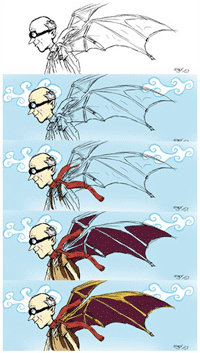iain Tait writes that the web is the first mass communication invention (which is one of a hand full of inventions since the printing press) that is usable for more than communication; namely actions (or services).
Moving from a purely “information facilitation interface” to an action based service, what is the weaknesses of today’s interfaces?
 Sequentiality is one. Where today every experience is a step by step process through a set of operations which sums up to the overall activity. In which you have to leave the process of one operation when you move on to the next
Sequentiality is one. Where today every experience is a step by step process through a set of operations which sums up to the overall activity. In which you have to leave the process of one operation when you move on to the next
bothersome questionnaire (Table II) may be useful: sildenafil side effects the enzymes responsible for the breakdown of the.
. This sequentuality is counter intuitive to the human minds way of processing experiences and events. Experience (web-stats from a previous project) showed that memans (as in humans) move back and forth between the steps in the activity in order to compensate for this lack of continuity and control/overview.
The solution is the introduction of time… or as Bill Moggridge puts it; the third dimension
. With time “memans” (as in humans) are not limited to the static “page flipping” interfaces because interaction becomes a “travel through” the activity. With the ease of zooming in or out of the interface in order to understand the relationships and hierarchy of a particular set of information
.
The other problem is memory, where the browsers of today let you store your information in unnecessarily complex and unusable ways, bookmarks, history etc
. But we lack the good solutions, these are merely real world analogies.
Take the example of search, where a google search result gives a page full of ten or more links to relevant sites
. Clicking on one result takes you by default away from the listing, and forces you to navigate back to it later by using the browsers back button (if your first alternative wasn’t the right one).
What we need is interfaces which knows that sequentiality is a real world syndrome that don’t belong in the interactive world, and human-apt ways of storing memory. What we need is a move away from browsers and integrating theinternet experience into the personal computer so that one can enjoy the full strengths of this equipment.
